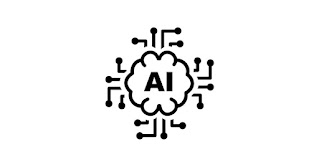Que- Generality is the measure of
a. Ease with which the method can be adapted to different domains of application
b. The average time required to construct the target knowledge structures from some specified initial structures
c. A learning system to function with unreliable feedback and with a variety of training examples
d. The overall power of the system
Ans- Ease with which the method can be adapted to different domains of application
Que- The primitives in probabilistic reasoning are random variables.
a. TRUE
b. False
c. Nothing can be said
d. None of the mentioned
Ans- TRUE
Que- Which is true for Decision theory?
a. Decision Theory = Probability theory + utility theory
b. Decision Theory = Inference theory + utility theory
c. Decision Theory = Uncertainty + utility theory
d. Decision Theory = Probability theory + preference
Ans- Decision Theory = Uncertainty + utility theory
Que- A constructive approach in which no commitment is made unless it is necessary to do so, is
a. Least commitment approach
b. Most commitment approach
c. Nonlinear planning
d. Opportunistic planning
Ans- Least commitment approach
Que- The performance of an agent can be improved by
a. Learning
b. Observing
c. Perceiving
d. None of the mentioned
Ans- Learning
Que- External actions of the agent is selected by
a. Perceive
b. Performance
c. Learning
d. Actuator
Ans- Performance
Que- The action of the Simple reflex agent completely depends upon
a. Perception history
b. Current perception
c. Learning theory
d. Utility functions
Ans- Current perception
Que- Following could be the approaches to Artificial Intelligence
a. Strong Artificial Intelligence
b. Weak Artificial Intelligence
c. Applied Artificial Intelligence
d. All of the mentioned
Ans- All of the mentioned
Que- An Artificial Neural Network Is based on
a. Strong Artificial Intelligence approach
b. Weak Artificial Intelligence approach
c. Cognitive Artificial Intelligence approach
d. Applied Artificial Intelligence approach
Ans- Cognitive Artificial Intelligence approach
Que- The Face Recognition system is based on
a. Strong Artificial Intelligence approach
b. Weak Artificial Intelligence approach
c. Cognitive Artificial Intelligence approach
d. Applied Artificial Intelligence approach
Ans- Applied Artificial Intelligence approach
Que- A completely automated chess engine (Learn from previous games) is based on
a. Strong Artificial Intelligence approach
b. Weak Artificial Intelligence approach
c. Cognitive Artificial Intelligence approach
d. Applied Artificial Intelligence approach
Ans- Strong Artificial Intelligence approach
Que- A basic line following robot is based on
a. Strong Artificial Intelligence approach
b. Weak Artificial Intelligence approach
c. Cognitive Artificial Intelligence approach
d. Applied Artificial Intelligence approach
Ans- Weak Artificial Intelligence approach
Que- The following task/tasks Artificial Intelligence could not do yet
a. Understand natural language robustly
b. Web mining
c. Construction of plans in real time dynamic systems
d. All of the mentioned
Ans- All of the mentioned
Que- What among the following is/are the example of the intelligent agent/agents?
a. Human
b. Robot
c. Autonomous Spacecraft
d. All of the mentioned
Ans- All of the mentioned
Que- When talking to a speech recognition program, the program divides each second of your speech into 100 separate:
a. Codes
b. Phonemes
c. Samples
d. Words
Ans- Samples
Que- Which term is used for describing the judgmental or commonsense part of problem solving?
a. Heuristic
b. Critical
c. Value based
d. Analytical
Ans- Heuristic
Que- Which stage of the manufacturing process has been described as "the mapping of function onto form"?
a. Design
b. Distribution
c. Project management
d. Field service
Ans- Design
Que- Which kind of planning consists of successive representations of different levels of a plan?
a. hierarchical planning
b. non-hierarchical planning
c. all of the mentioned
d. project planning
Ans- hierarchical planning
Que- What was originally called the "imitation game" by its creator?
a. The Turing Test
b. LISP
c. The Logic Theorist
d. Cybernetics
Ans- The Turing Test
Que- Decision support programs are designed to help managers make:
a. budget projections
b. visual presentations
c. business decisions
d. vacation schedules
Ans- business decisions
Que- PROLOG is an AI programming language, which solves problems with a form of symbolic logic known as predicate calculus. It was developed in 1972 at the University of Marseilles by a team of specialists. Can you name the person who headed this team?
a. Alain Colmerauer
b. Niklaus Wirth
c. Seymour Papert
d. John McCarthy
Ans- Alain Colmerauer
Que- Programming a robot by physically moving it through the trajectory you want it to follow be called:
a. contact sensing control
b. continuous-path control
c. robot vision control
d. pick-and-place control
Ans- continuous-path control
Que- To invoke the LISP system, you must enter
a. AI
b. LISP
c. CL (Common Lisp)
d. Both LISP and CL
Ans- LISP
Que- In LISP, the function (list-length <list>)
a. returns a new list that is equal to <:list> by copying the top-level element of <list>
b. returns the length of <list>
c. returns t if <list> is empty
d. all of the mentioned
Ans- returns the length of <list>
Que- ART (Automatic Reasoning Tool) is designed to be used on:
a. LISP machines
b. Personal computers
c. Microcomputers
d. All of the mentioned
Ans- LISP machines
Que- Which particular generation of computers is associated with artificial intelligence?
a. Second
b. Fourth
c. Fifth
d. Third
Ans- Fifth
Que- Shaping teaching techniques to fit the learning patterns of individual students is the goal of:
a. decision support
b. automatic programming
c. intelligent computer-assisted instruction
d. expert systems
Ans- intelligent computer-assisted instruction
Que- Which of the following function returns t If the object is a symbol m LISP?
a. (* <object>)
b. (symbolp <object>)
c. (nonnumeric <object>)
d. (constantp <object>)
Ans- (symbolp <object>)

